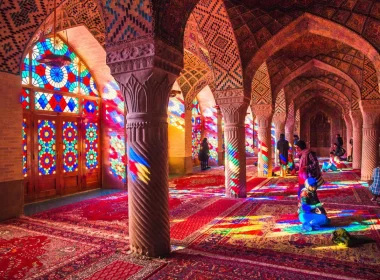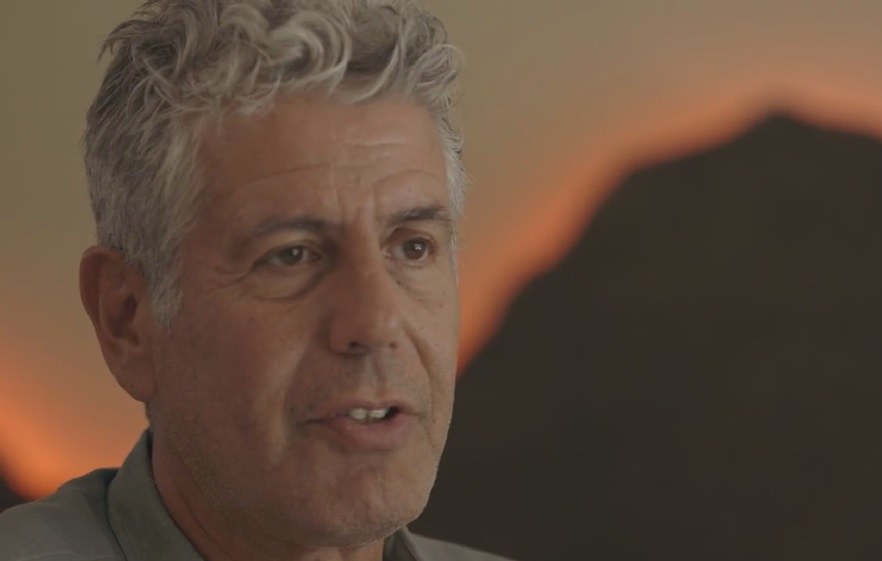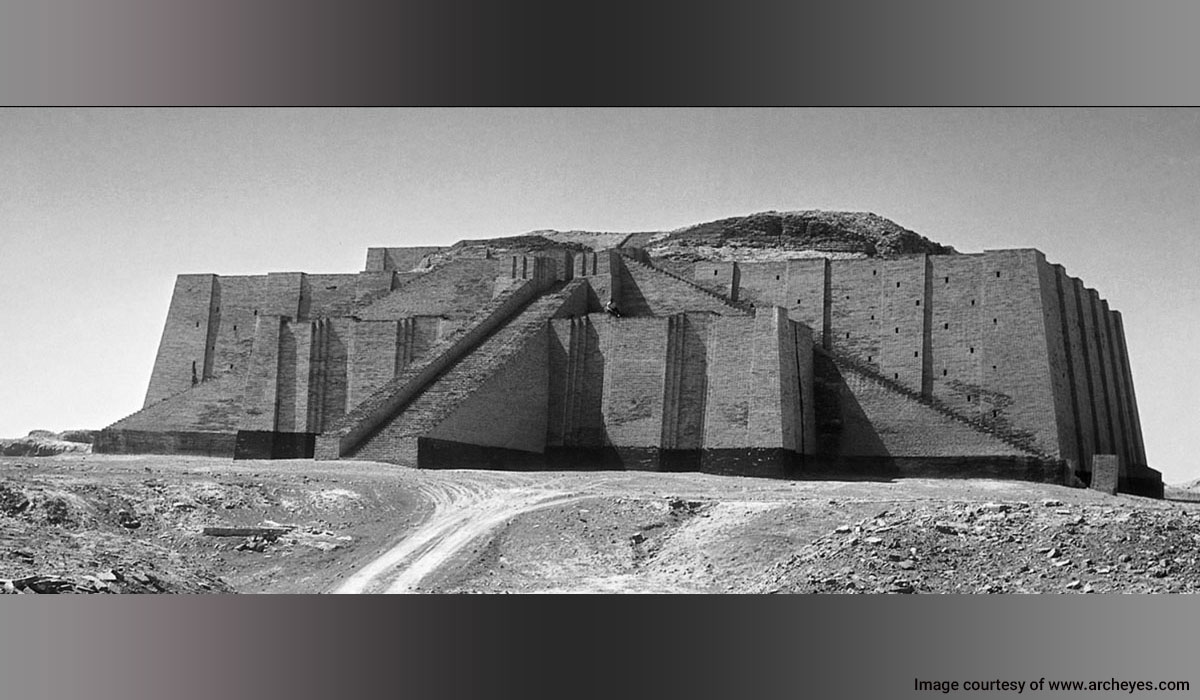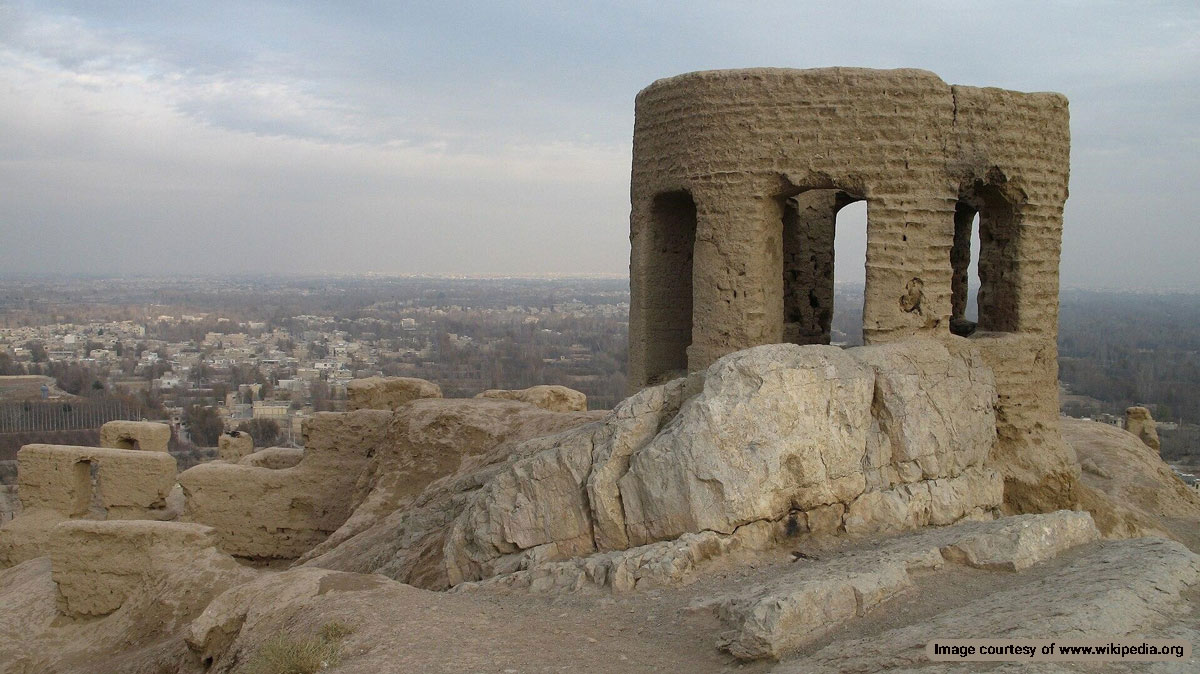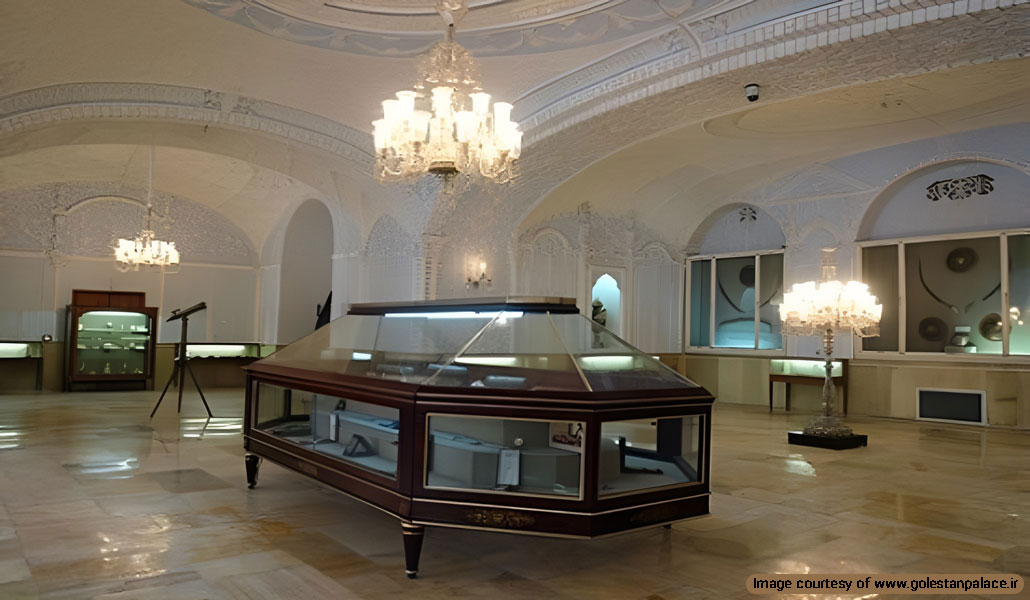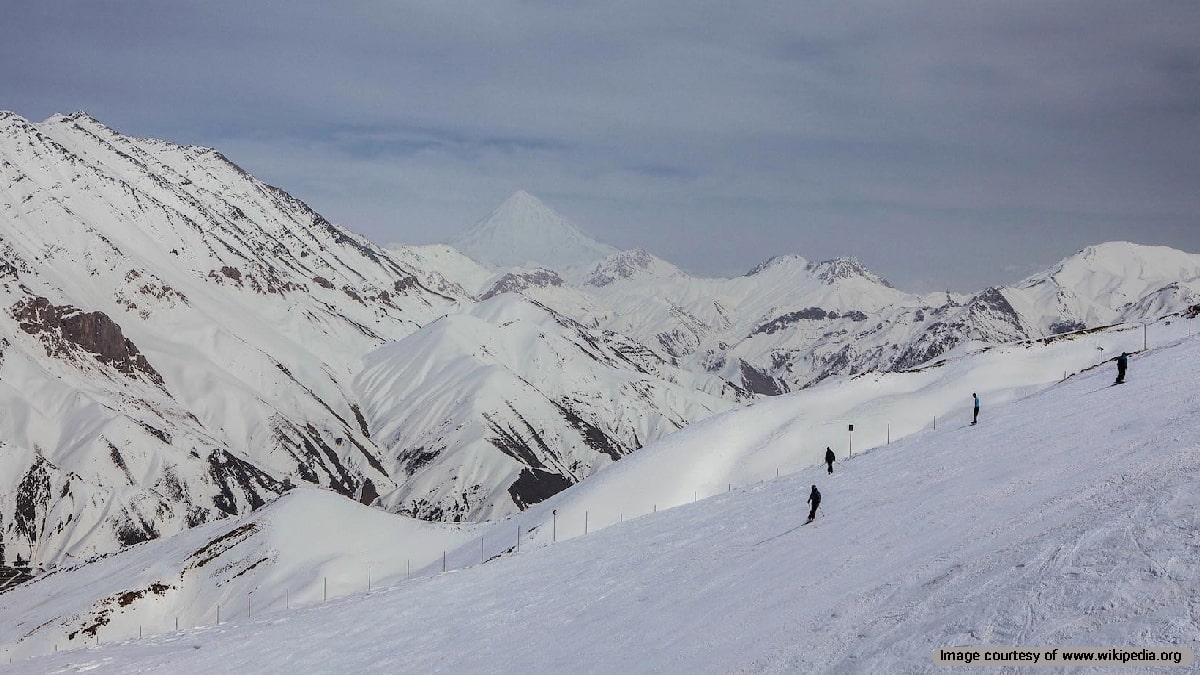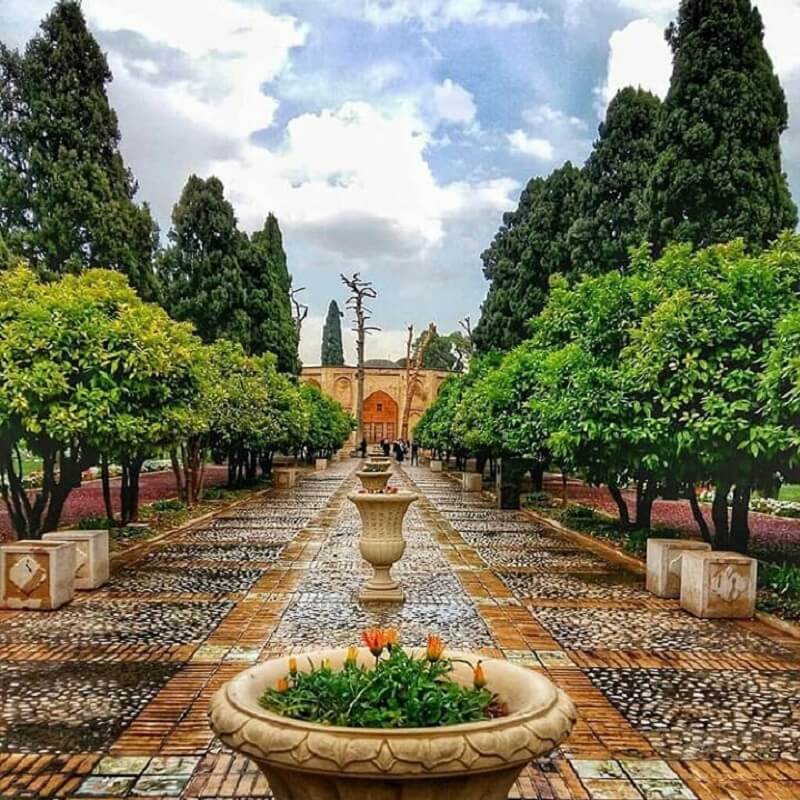
Nine Iranian gardens were added to the Iranian UNESCO World Heritage Sites in 2011. The Persian Garden design has influenced garden architecture from India to Spain. According to written documents left by Greek historians, the construction of gardens of varying sizes near buildings and courtyards dates back 3,000 years. Such green areas were called “pairidaēza” in Avestan, translating to “around the structure”. Daēza means a building and Pardis means a large garden.
In European languages, Paradise means a walled garden. These gardens follow a design inspired by the four main elements and are compatible with different weather conditions. They invite viewers to stop and contemplate these paradises on earth.
Later, the word “pairidaēza” was removed from Middle Persian (Pahlavi) and was replaced with the word “Bai”. In modern Farsi, there are also words with the same meaning as pairidaēza: Bostan, Bustan, and Golestan.
Iranian gardens were a manifestation of royal glory and not just a green space for rest and recreation, but considered a symbol of the king’s divine role in fertilizing the land. By building stunning gardens, the kings emphasized the existence of their Khvarenah (divine right to rule). This notion and process of building gardens among kings continued even after Islam.
Persian Gardens in Iranian History
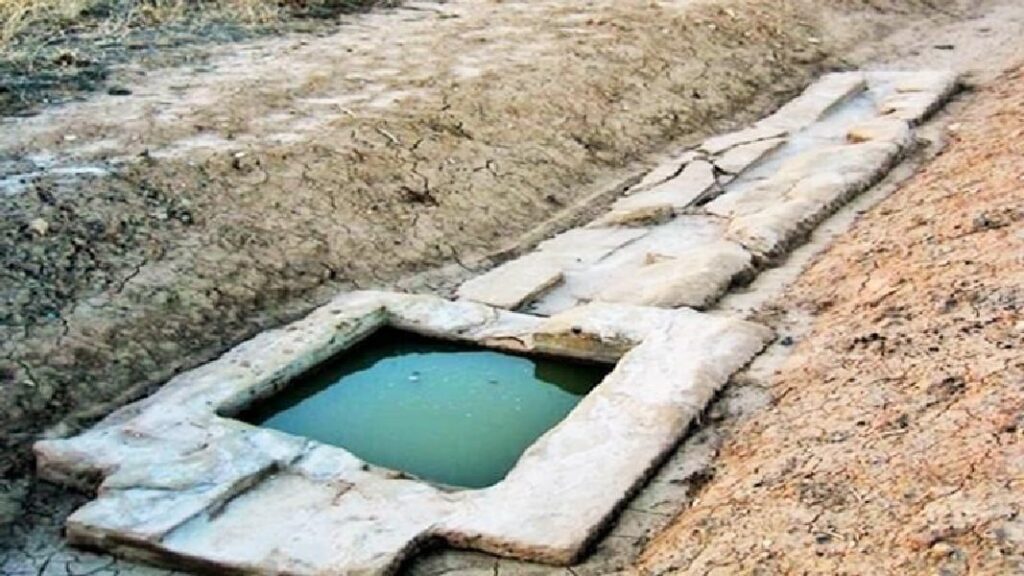
The oldest trace of the Persian Garden is a Derafsh (banner) found in the Shahdad archeological excavations in Kerman dating back to 3500 to 3200 BC. A checkered and rectangular garden is marked on this banner, and a palm tree and a fountain can be seen in this painting.
According to the scant evidence available in Pasargadae, researchers can confirm the existence of a garden there with the features we associate with the concept of persian gardens. This royal garden belonging to Cyrus the Great has a perfect geometric plan. The designs of Achaemenid gardens were imitated in later periods as well.
The hunting scene of Sassanid King Khusrow II in the “Hunting Garden” relief in Taq-e Bostan is one of the oldest pictorial evidence of these gardens. There are even older well-built gardens designed according to geometric principles, dating back to the Achaemenid period. Pasargadae is an example of such an ancient garden.
In the Sassanid period (4th to 7th century), the architecture of such gardens was further developed. Examples can be found in garden palaces such as Firuzabad and Takht-e Soleyman. However, some people believe that garden design and architecture flourished in the 16th to 18th centuries, i.e. the Safavid era. During this period, Qazvin was the first capital to follow this trend and the practice continued until the capital was moved to Isfahan. Then the “Garden City ” concept was created in Isfahan and later adopted in Shiraz.
Persian Garden Characteristics
Persian gardens feature geometric designs and the Panj-Kasht principle. Panj-Kasht means four gardens are built in the perimeter and one in the center. In the Zoroastrian religion, the ancient religion of the Iranians, the world is divided into four sections(sky, earth, water, and plants), which is the philosophy behind the design of Iranian gardens.
In Iranian gardens, there are common features that are fully observed:
- Attention to the principle of symmetry
- Inclusion of a Howz (pool with symmetrical axis)
- Correlation and harmony between water, the garden, and its architecture
- Building high enclosure walls around the garden
- Choosing the location of the garden in the path of a moving water source or an aqueduct
- Building a large building (mansion) with unique architecture in the center of the garden
- A geometric plan: a central, axial, or square design.
Rashid al-Din Fazullah Hamdani, the Ilkhanate minister, has recorded the oldest Persian garden design. He has written about the design of the Ojan Garden near Tabriz: “A group of craftsmen and engineers worked for three years to construct it… The central area was intended for the kiosk (pavilion), the surrounding barracks and towers, the bathhouses, and high buildings.”
The Iranian gardens introduced in this article are Iranian tangible cultural heritage sites, registered in the Persian Garden Collection by the UNESCO World Heritage Convention:
Pasargadae Garden in Fars Province
The Pasargadae Garden, with thousands of years of history, is considered the first and oldest designed garden. Cyrus the Great ordered the construction of this garden. It is the prototype of Iranian Gardens, built over 249 hectares north of Shiraz. In terms of architecture and design, the architect has designed it in four sections. “Water” is an important aspect of its architectural elements and plan. The four main elements of the Zoroastrian religion, air, water, earth, and light are displayed in this garden.
Eram Garden in Fars Province
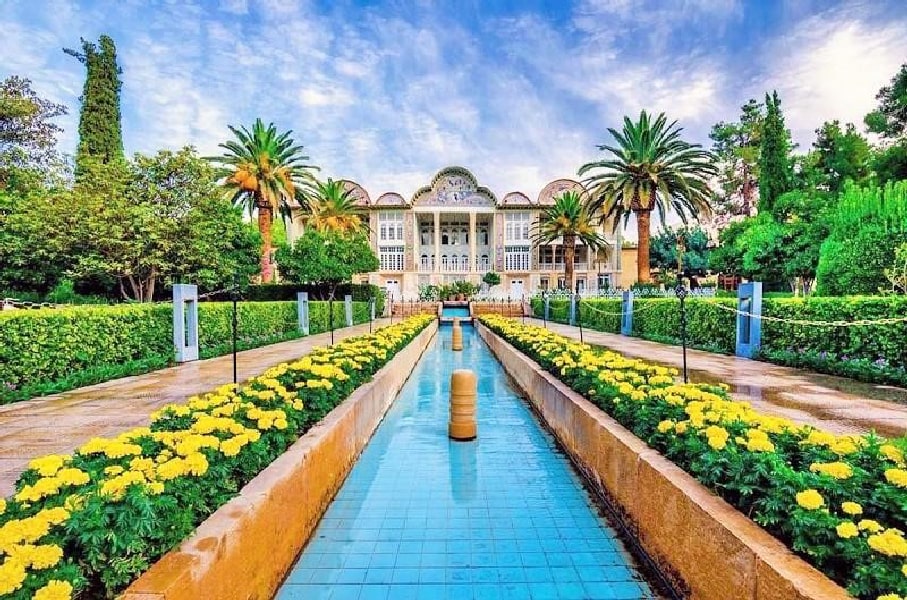
The architectural style of this garden follows the Qajar period trend in an imitation of the architectural style of the Zand period. This world heritage site is a unique masterpiece due to its impressive architecture, tilework and plasterwork decoration, and paintings. Persepolis inspired the design of the upper floor pillars. The top of the building consists of two small arches on the sides and a larger arch in the middle with an image of the Shahnameh in the middle. This combination has created a stunning view.
Chehel Sotoun Garden in Isfahan Province
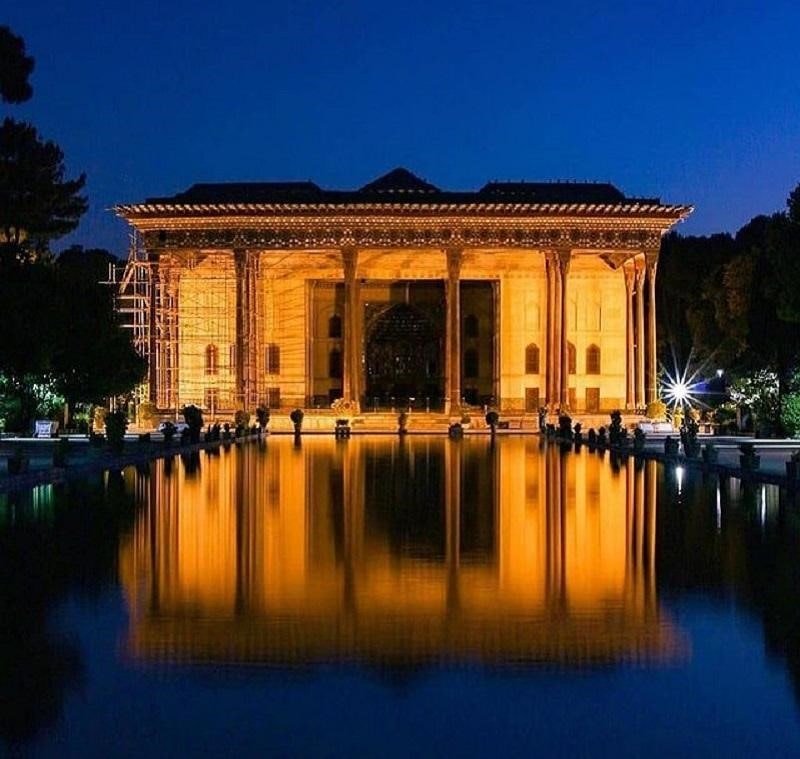
This historical attraction is also called Chehel Sotoun Palace. There are twenty columns on the porch. The reflection of these twenty columns in the front pool creates the illusion of Chehel Sotoun (forty columns). At first, Shah Abbas built a building with a hall and rooms and laid the foundation of the Chehel Sotoun. He celebrated the 23rd anniversary of his reign in this place.
During the time of Shah Abbas II, the area was expanded and exquisite paintings and ornaments were added. After Shah Abbas II until the Afghan invasion, this palace was a venue for holding royal ceremonies.
This mansion includes a hall of mirrors, an outer hall with twenty columns, two large north and south halls, two Iwans (similar to the porch) on the sides of the hall, a large pool in front of the building, and a smaller pool in the back. The garden has a color theme similar to the Sassanid Firuzabad Palace. It is undetermined whether this similarity is accidental or intentional.
The ceilings and interior walls are decorated with beautiful paintings, which are in two groups:
- Scenes of celebration and joy and hunting
- Historical and political events of the Safavid period, such as the Battle of Chaldiran in 1514
This palace has been damaged many times. During the reign of Shah Sultan Hossein, there was a fire in which many parts of the palace were destroyed because the king assumed extinguishing the fire would be against God’s will. During the siege of Isfahan by the Safavid army, many of the exquisite works of the palace were pillaged. It was Naser al-Din Shah’s son, Mozaffar ad-Din, who inflicted a heavy blow on the Chehel Sotoun palace. He took the exquisite doors and windows of the palace to Tehran to build the Masoudieh Palace. By his order, many of the paintings in the palace were destroyed with plaster and axes.
This palace was added to the Iran National Heritage List in 1931, and arrangements were made for its restoration and care.
Fin Garden of Kashan in Isfahan province
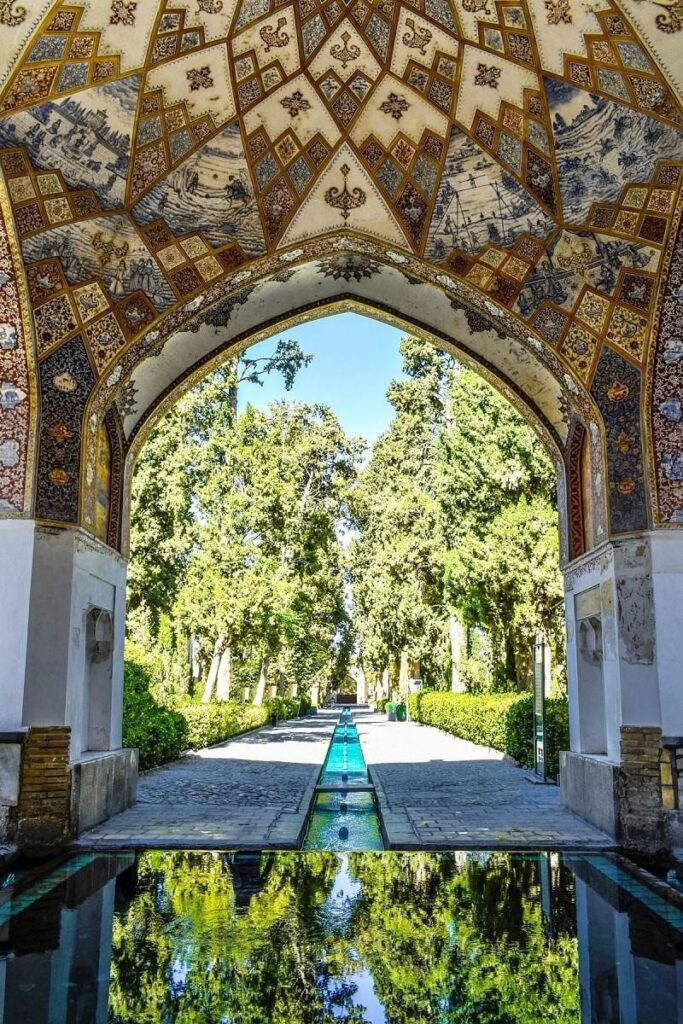
The name of Fin Garden of Kashan is connected with the murder of Amir Kabir during the reign of Naser al-Din Shah Qajar. Shah Abbas ordered the construction of this garden when he came to Kashan from his capital Isfahan for a hunting trip in the Karkas Mountain range and needed a resort. The architect of the garden was Ghiyasuddin Jamshid al-Kashi or Baha al-Din al-Amili.
Later Safavid kings also added parts to the garden, and most of these alterations occurred during the period of Fath Ali Shah. After his death, the garden was abandoned and parts of it were lost. Later, during the Pahlavi period, the garden was restored and the National Museum of Kashan was built on the ruins of Nizam al-Dawlah’s secluded building.
This garden has an area of 23,000 square meters and includes a central courtyard enclosed by walls and watchtowers belonging to the Safavid period. The water flowing in the streams and pools of the garden originates from the Suleymaniye spring.
Near Fin Garden, there are historical remains of a Buyid garden, which is known as Bagh-e Kohneh (old garden) and is a testament to the precedence of Fin Garden.
Pahlavanpur Garden in Yazd Province
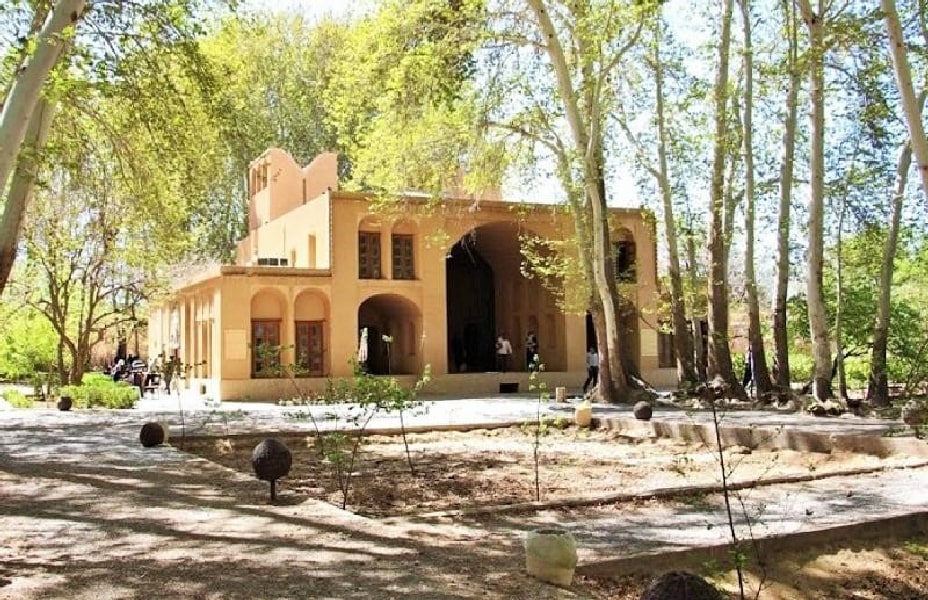
This world heritage site is located in the city of Mehriz south of Yazd. This garden was one of the assets of a Mehrizi merchant and Pahlavan named “Ali Pahlavanpur Mehrizi”, which was later purchased by the Cultural Heritage Organization.
Pahlavanpur Garden owes its fame and prosperity to the water stream that passes through it. This water originates from the Hassan Abad aqueduct, passes through the middle of the pavilion and flows into the garden. Pomegranate, persimmon, and almond trees are abundant in this garden. Apart from the garden building, the rest of it seems to have natural origins, with no signs of intention or design.
Dowlat Abad Garden in Yazd Province
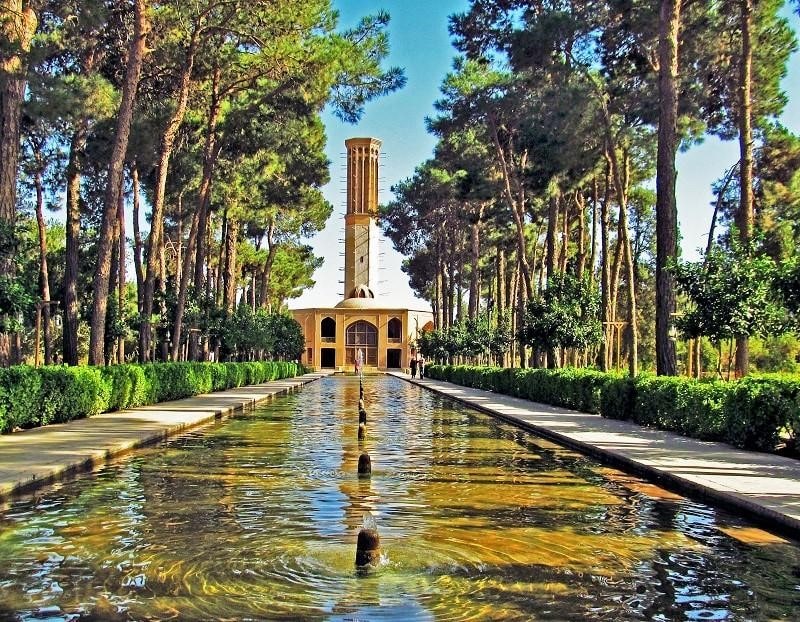
This garden is one of the oldest Iranian gardens, as esteemed as the Fin Garden and Shazdeh Mahan Garden. The Hashti building is located at the center of this Iranian garden and facilitates air conditioning and water passage through the garden. That is why this garden is also called Tabestaneh (summer dwelling).
There is a long pool between the garden entrance and the mansion. In addition, the world’s tallest windcatcher is built on top of the mansion. The wind blowing on the water of the pool below it cools the water and the environment.
Dowlat Abad Garden is one of the Zand historical attractions. Mohammad Taqi Khan, one of the rulers of Yazd, first dug an aqueduct called Dowlat Abad in this place and then ordered the construction of a garden.
Akbarieh Garden in South Khorasan Province
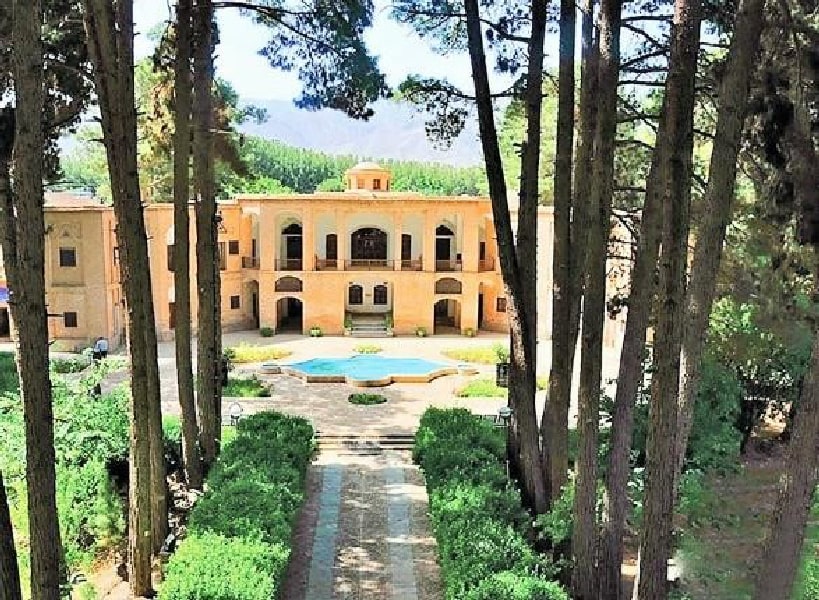
This garden with an area of 45,000 square meters is located in the foothills of a mountain and dates back to the Zand and Qajar dynasties. There are several buildings in it, the oldest building is known as the “Heshmat al-Mulk” mansion.
The architect has designed marquetry and Girih tiles with colored glass for this two-story building. You can also see beautiful arabesque designs and various geometric plasterwork patterns in this building. Its architectural style is a fusion of Iranian and Russian architecture.
The garden is located on a sloping surface that facilitates the flow of water in streams. The mansion is built on the highest section of the garden. Today, the central building of this Persian garden is used as an archaeological and anthropological museum.
Abbas Abad Garden in Mazandaran Province
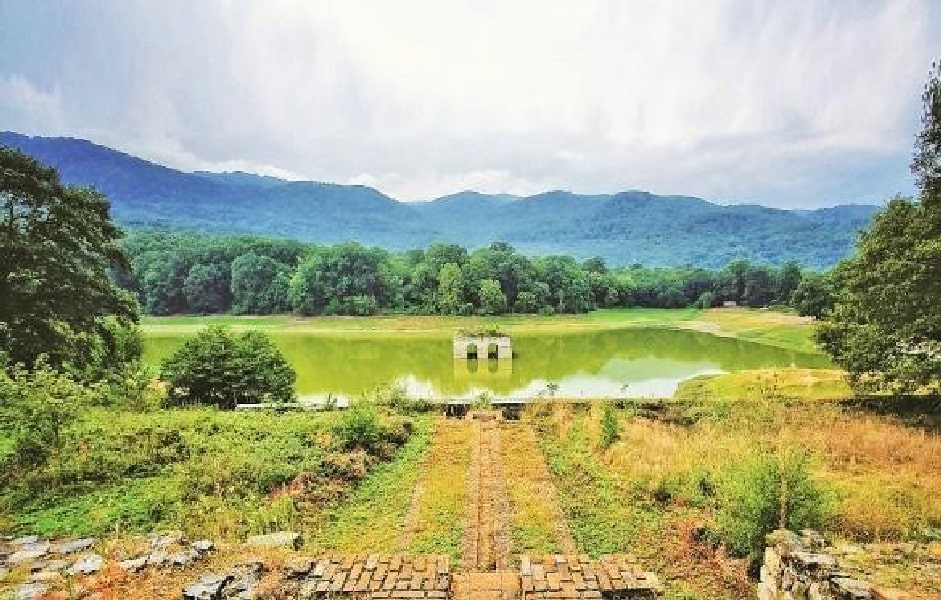
Abbas Abad Historical Garden is located nine kilometers from Behshahr between the Alborz mountain range and the forest. The water in the Abbas Abad Garden complex is supplied by the Abbas Abad dam and lake, and the water reservoir behind it. The flower garden, water mill, mansion, and two brick watchtowers were built by the order of Shah Abbas.
There is a Chahar Taq (building with four arches) in the middle of the artificial lake created by the dam in Abbas Abad Garden. When the dam is filled with water, the Chahar Taq is surrounded by the water and creates an island.
Shazdeh Mahan Garden in Kerman province
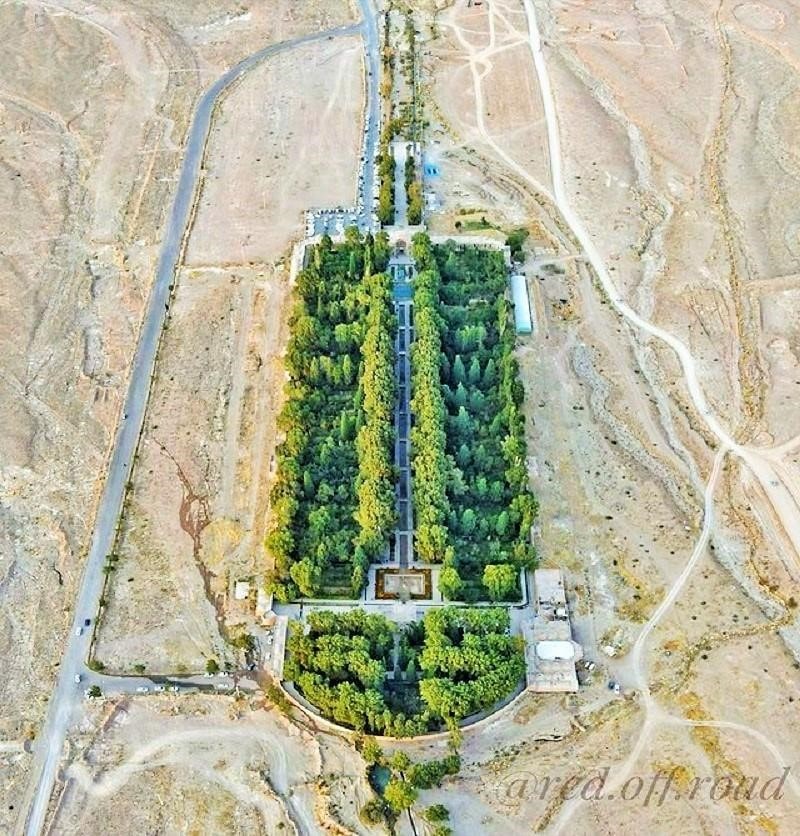
This garden has an area of 5.5 hectares and is located on the slopes of the Tigran mountains and near the tomb of Shah Nematullah Vali. Its construction dates back to the Qajar period. The architect of the garden was Abdul Hamid Mirza Naser al-Douleh, who died before the completion of the garden leaving the construction of the garden incomplete.
This Iranian garden is a single-axis style building. The main axis of such gardens is the water canal, passage, and trees on the sides of the canal. Shazdeh Mahan Garden is built on a sloping surface that helps the flow of water. The design of the garden, fountains, and placement of stairs are all implemented with symmetry.
Mahan Garden shines like a pleasant paradise in the middle of an arid desert and is a reminder of the glory of Iranian philosophy and art.
Impact of Persian Garden on Iranian Art and Culture
Building a Persian Garden is an art form and its reflections have manifested in other arts, among these arts the following examples are worth mentioning:
- Paintings by artists such as Sohrab Sepehri and Mehdi Akhavan-Sales
- Architectural designs
- Persian Music
- Miniature art
- Persian literature
- Carpet weaving
- Tilework decorations
Persian gardens are world heritage sites and leave a magical touch on everyone who visits them. Iranians are proud of their heritage and enthusiastically keep the tradition of creating gardens alive by creating small and beautiful gardens wherever they live. They even bring joy to their daily lives by creating a small garden near their residence.
A visit to Iran is not complete without visiting Persian gardens. The garden is the entanglement of Iranian mysticism and thought with the essence of nature, and it will create a unique and memorable concept of garden and paradise for every traveler.
Frequently Asked Questions About The Persian Garden
If you did not find the answer to your question here, leave us a comment in the comment section below this post and ask your question. We will answer it as soon as possible.
What is the Persian Garden?
The Persian Garden refers to gardens featuring unique architecture and design characteristics that can only be seen in the Iranian plateau and its surrounding areas. The special feature of these gardens is the presence of water, high enclosure walls, and a pool facing the main building. In Iranian literature, these gardens are called “Bagh Sera”, “Ferdows” or “Pardis”.
Where is the oldest Persian Garden in Iran?
“Pasargadae Garden” is the oldest Iranian garden that was constructed in the 6th century BCE and the era of Cyrus the Great. The existing inscriptions show that this garden was designed by Cyrus himself.
What is the golden age of garden architecture in Iran?
Garden construction in Iran began in the Achaemenid period. The Achaemenid kings liked to build a garden wherever they lived. Of course, researchers consider the Safavid period to be the most magnificent era of garden architecture in Iran. During this period, gardens were part of the urban structure.




